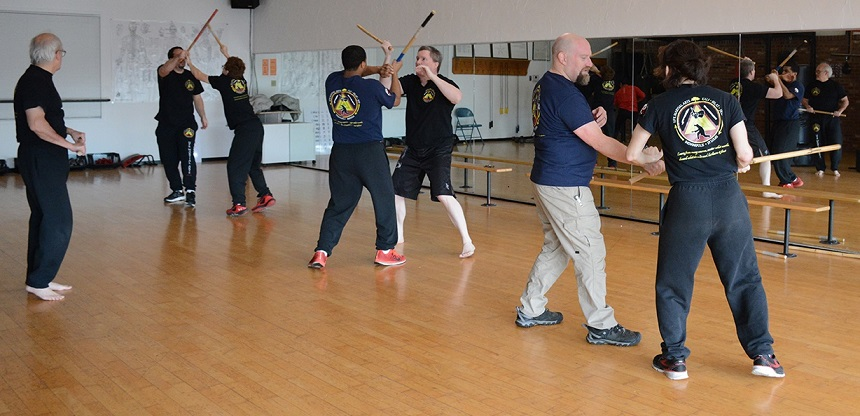Martial Arts Taught at UFR M.A.
Jeet Kune Do / Jun Fan Gung Fu
Jeet Kune Do existed as a style for a very brief period (less than a year) before its creator realized that generations to come would misinterpret the meanings of his teachings. In the 'Tao of Jeet Kune Do' (p.74-75) written by Bruce Lee, we can find a list of "Some Weapons From JKD" that includes joint locks from judo, leg tackles from wrestling, and other techniques from boxing, jujitsu, savate, and trapping techniques. This book seems to suggest a beginning rather than a complete formula - a philosophy rather than a set pattern. Its very beginning gives us the key to JKD: "This book is dedicated to the Free, Creative Martial Artist. Take what is useful and develop from there".
Jeet Kune Do is all-encompassing. This means that it is not a fixed curriculum but rather an "evolving art". You can find JKD principles that will apply to all martial arts you practice. As long as you continue learning, developing, and evolving as a martial artist, you will be "practicing JKD". To quote Guro Dan Inosanto, the world leading authority in Jeet Kune Do, "JKD is a process of elimination, not accumulation...but let's remember it is a process, not a product".
In JKD/Jun Fan Gung Fu classes, we will be exploring various kickboxing, Thai boxing, trapping, and some grappling/takedowns techniques and concepts.
Kali / Filipino Martial Arts
Kali is a relatively new term whose meaning includes an ancient martial art that originated in the Philippines. It is said to encompass all the Filipino martial arts. Other common names associated with this art are Arnis, Eskrima, and Dumog. The value of Kali cannot be emphasized enough. This powerful art covers all four ranges of combat and includes principles that can be transferred from one weapon to another and to other arts. Kali training is divided into eleven areas: double stick, single stick, stick and dagger, single knife, double knife, staff, projectile weapons, throwing weapons, palm stick, flexible weapons, and empty hands. There is a twelth training area that includes the healing arts which are an important aspect of martial arts in general.
Kali training emphasizes angles of attack, footwork, reflexes, sensitivity, and speed.
Pencak / Maphilindo Silat
Pencak Silat is a martial art from Malaysia and Indonesia. This art is also found in the Southern Philippines, Singapore, and Thailand. There are many styles of Pencak Silat, among them are, to name a few, Cimande, Cikalong, Harimau, and Kari. Silat is practiced through short forms (jurus), long forms (kembangan), and "free styling". Silat can be described as lightning fast, close-quarter, and seemingly effortless techniques whose attacks can be heavily biomechanical. Silat takedowns can seem fake and unreal to the uneducated eye.
The term Maphilindo Silat is given to a system created by Guro Dan Inosanto. It is a combination of all the Silat systems he learned from Malaysia, the Philippines, and Indonesia. This system focuses on the essentials such as footwork and direct applications that include a wide range of techniques and concepts from many Silat styles. It ties into the Madjapahit martial arts taught by Guro Inosanto that encompasses martial arts from Thailand, Burma, and other Southeast Asian martial arts. This system does not emphasize jurus/forms (although it references them) and instead prioritizes direct application.



